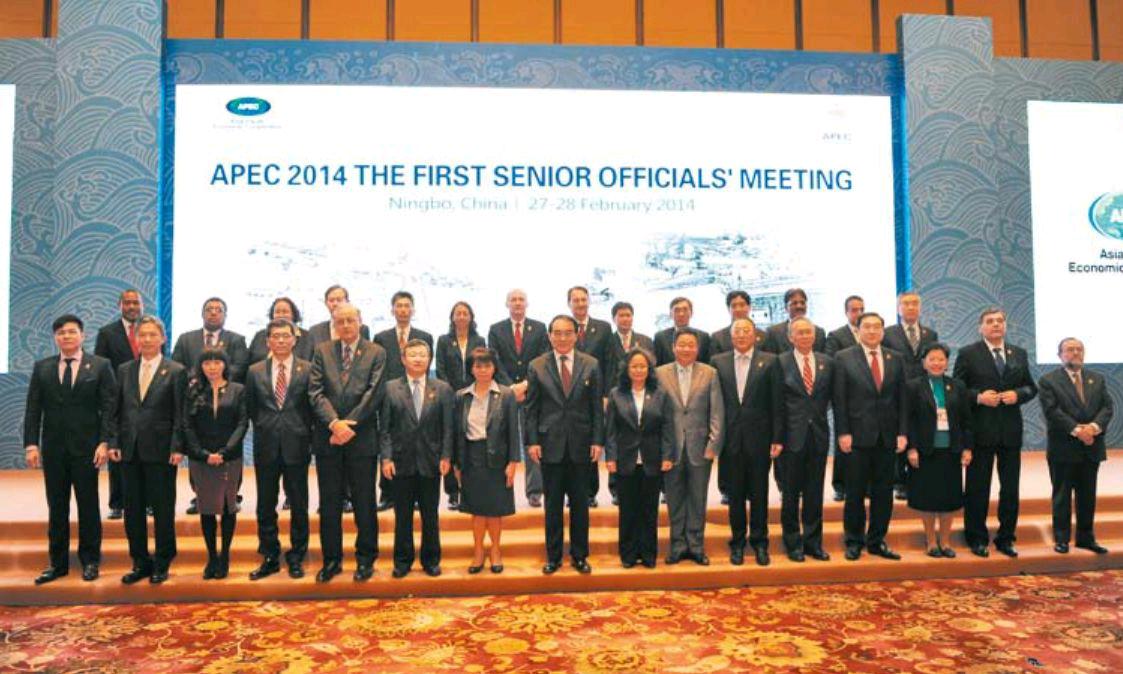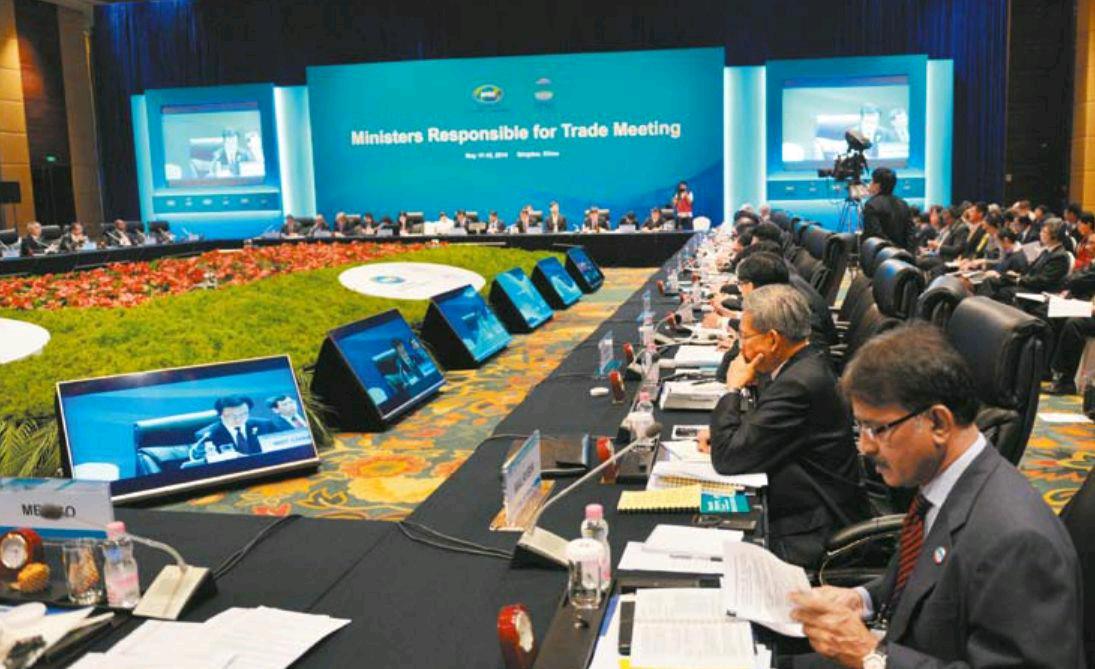APEC: Future of Asia-Pacific and Beyond
by+An+Gang
The Chinese government sees the 2014 Asia Pacific Economic Cooperation (APEC) summit as an opportunity to promote its diplomacy. Earlier this year, Chinese Foreign Minister Wang Yi wrote in an essay that China would “give full play to its home-field advantage, make its own voice heard, and gather the wisdom of Asia, so as to inject new energy into the development and cooperation of the Asia-Pacific region.”
The 2014 APEC summit, themed“Shaping the Future through Asia-Pacific Partnership,” focuses on issues in three priority areas: Advancing regional economic integration, promoting innovative development, economic reform and growth, and strengthening comprehensive connectivity and infrastructure development.
In 2013, at the APEC CEO Summit in Bali, Indonesia, Chinese President Xi Jinping was already calling for construction of a regional interconnection and cooperation framework stretching across the Pacific Ocean, so as to stimulate the establishment of sub-regional economic corridors and consolidate the massive AsiaPacific market covering 21 economies and 2.8 billion people. Xi also proposed the establishment of the Asian Infrastructure Investment Bank.
As the worlds economic center of gravity has shifted to Asia, the importance of the Chinese economy continues increasing. The time is ripe for China to play a moderate lead and coordinating role in regional economic affairs.
The rate of Chinas contribution to Asian economic growth has surpassed 50 percent for two successive years. In 2013, foreign trade between China and other APEC members accounted for 60 percent of the countrys total foreign trade, 70 percent of Chinas total overseas investments went to APEC members, and 83 percent of total foreign capital used in China came from APEC member countries. Eight of Chinas top 10 trade partners are APEC members. By the end of 2013, China had signed 12 free trade agreements with 20 countries and regions, with six more still being negotiated. Most of its free trade partners are APEC members.
The next few years will be critical for the Asia-Pacific region to establish an open trade order. China will remain commit- ted to establishing a regional cooperation framework across the Pacific Ocean that benefits all parties, and will promote discussion of Free Trade Area of the Asia-Pacific (FTAAP) at this years APEC summit. At the Boao Forum for Asia (BFA) annual conference in April 2014, Chinese Vice Foreign Minister Li Baodong remarked that Asia-Pacific economic cooperation was at a crossroad between integration and fragmentation. “Its time to take action,” he asserted.
As the most significant regional cooperation organization in the Asia-Pacific region, APEC had already proposed the es- tablishment of FTAAP as early as 2004. In 2006, the APEC Hanoi Declaration made FTAAP a long-term issue to study.
Many regional trade agreements, either signed or in negotiations, enhance the Asia-Pacific region. Of those, the most influential are the Trans-Pacific Partnership (TPP) initiated by the United States, which excludes China, and the Regional Comprehensive Economic Partnership(RCEP) produced by the Association of Southeast Asian Nations (ASEAN), which includes China. TPP and RCEP overlap and compete with each other, and it is hard to predict which will survive as the founda- tion of FTAAP.
TPP stresses that it is based on “common values” and consists of 12 members, including Australia, Japan, Malaysia, and Vietnam. It aims to form new trade rules and involves issues including not only tariffs, but also intellectual property and favorable treatment of state-owned enterprises. The United States requires TPP members to sign a preliminary framework agreement no later than the end of 2014. China is excluded from TPP. However, disputes between the United States and Japan on tariffs on agricultural and automotive products have already cast clouds over TPP.
RCEP has 16 members and focuses solely on trade, aiming to establish a united market through cutting tariffs and removing non-tariff barriers. When addressing the 2014 BFA annual conference, Chinese Premier Li Keqiang expressed hope that an agreement on RCEP could be reached by 2015 and pointed out Chinas open position towards TPP, noting that RCEP and TPP could mutually enhance and promote each other rather than opposing each other.
In his speech at APEC CEO Summit on October 7, 2013, Chinese President Xi Jinping remarked that APEC should play the lead and organizational role in strengthening coordination of macroeconomic policies, promoting the formulation of regional free trade agreements, and accelerating regional integration based on the open, inclusive, mutually beneficial and win-win concepts.
Competition between RCEP and TPP mirrors the relationship between China and the United States. The two major powers conduct both competition and cooperation in the Asia-Pacific region. They are skeptical of each others strategies, but cannot afford the steep cost of conflict. Therefore, the relationship must maintain stable development. Most Asia-Pacific countries want to see improvements in the Sino-American relationship.
Since Barack Obama took office, China and the United States had maintained a good relationship until this year, when several disputes arose with the Obama Administrations Strategic Rebalance towards the Asia-Pacific region.
The U.S. side has confirmed that President Obama will visit China to attend the APEC summit in Beijing. During the summit, he will focus on promoting economic growth and utilization of renewable fuel, supporting the participation of micro and small enterprises and women in the economy, and expanding educational exchange. These three topics are highly consistent with the economic and social reform that Obama has been promoting in the United States.
Over the past two years, Obama missed two APEC Business LeadersMeetings due to domestic affairs. To ensure he attends this years APEC meeting, China postponed it until after the 2014 U.S. mid-term congressional elections.
Early in September 2014, U.S. National Security Advisor Susan Rice spent three days in China, a trip believed to be preparation for U.S. President Obamas upcoming visit. During her meeting with Chinese leaders, Rice declared that despite various worldwide challenges that the United States is facing, President Obama still places top priority on U.S.-China ties.
Some pundits believe President Obamas visit to China will bring substantive achievements relating to his administrative performance and diplomatic legacy. For this reason, the United States has produced a lengthy agenda, including issues such as climate change, bilateral economics, trade and investment agreements, exchange rates, counter-terrorism, internet security, outer space security, Iraq, the Iranian nuclear issue, the Korean nuclear issue, and the South Sudan issue.
As two of the most important stakeholders in the Asia-Pacific region, China and the United States should play lead roles in promoting cooperation between APEC members and the sustainable economic prosperity of the Asia-Pacific region.
Chinese and American leaders have reached consensus on building a new relationship between the major countries, so as to avoid the Thucydides Trap – destructive tension between an emerging power and established powers. Obamas pending trip to China is expected to bring progress in implementing the consensus and reducing hostility between China and the United States.

